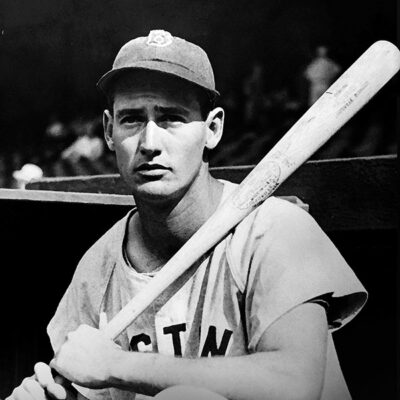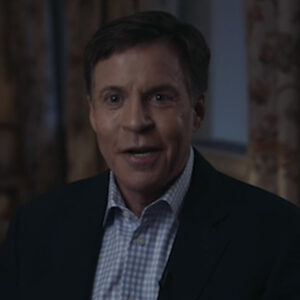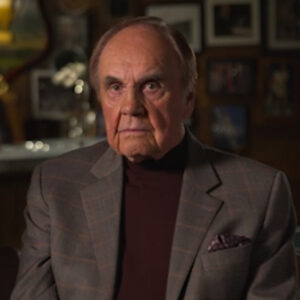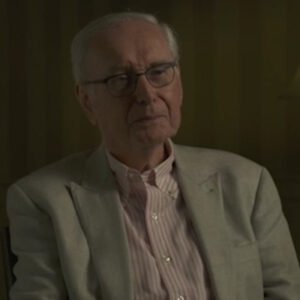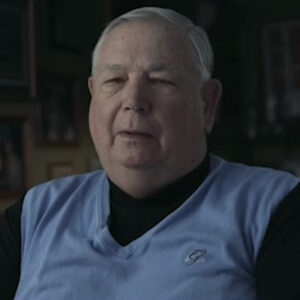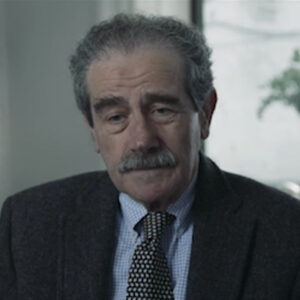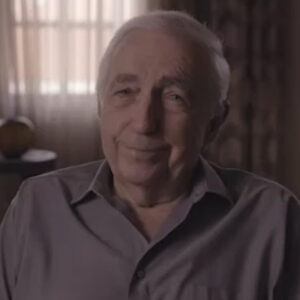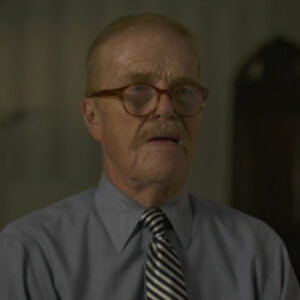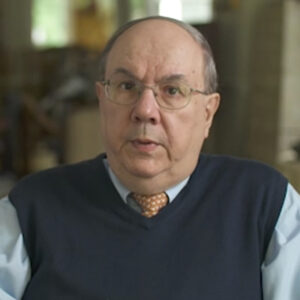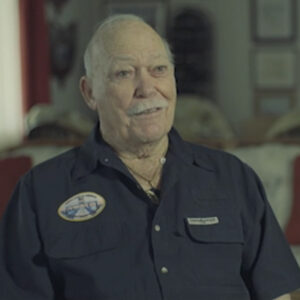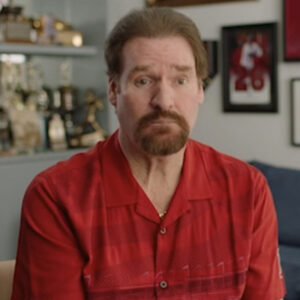Speaker 1 Well, August two, 1959, first of all, was quite a surprise because it’s the day I got called up to the big leagues, made my debut, but I really was reporting with a compromised arm. I had had some pretty dominant games early that year, set the Southern Association strikeout record with 19 and all of a sudden something went wrong with my shoulder, didn’t have memorizer or ultrasounds, things like that in those days. But when I got the call up my man, I said, you know, I can’t get my arm as high as I did early in the year. Tell him about it when you get up there. So first of all, I went up really not in top form, but it was it was so exciting for me because being at Comiskey Park against the White Sox growing up in southwest Michigan, about three hours north of there, and a lot of people come down that were actually White Sox fans and as well as my parents. So, you know, those are memorable days for all kids that get called up to the big leagues.
Speaker 2 How how nervous were you in your early days as a major leaguer?
Speaker 1 Well, I think just like every kid, first of all, I was in awe because those were the days of no cable TV. The only games on television were the games on Saturday afternoon. And if you weren’t on television, you were playing someplace else. So you never really saw the players. So when I saw Louis Aparicio and Nellie Fox for the first time, I’d never seen it before on TV. So I was more in awe. And then the nerves of, you know, being we call it the double decker syndrome. Louis Armstrong actually played between games of the doubleheader when I started game two and I was a trumpet player. So I’m more interested in hearing Satchmo plays trumpet while I walk it up. And I didn’t have a very successful debut, but memorable. But certainly there are nerves there. But I think any athlete will, whether young or old, once the game starts, you kind of default into, you know, this is what I do and kind of cut your head off and let your body go to work.
Speaker 2 What was it like playing for a team that was and I’m sure this happened to you at a point in your career for a team that was kind of going nowhere at the end of the year there?
Speaker 1 Well, it was it was humorous and was from one standpoint, because I’ll never forget my debut. The dressing rooms in Comiskey Park were up above the third base dugout up a flight of stairs. I remember when I reported there and I said to Shaki, the equipment manager told him my name. I had my old duffle bag. I said, I’m here to join the Washington senators. Do you have a locker for me? The lockers were about this. Why’d they wear that wire cage? He walked over and there were two nails in the wall. He said, you got those two nails right there. So that was my dressing space. This was on the day before I actually pitched. And then game two, I was up in the clubhouse sort of getting game ready for game two. We lost the first game of the doubleheader, two to one. Russ Kemmerer, who was a starting pitcher, is walking up as I’m walking down. He said, Kid, good luck. You don’t have a chance because we had lost nineteen in a row. And the game I think the game I lost may have been the nineteen. So as we said about the old senator’s first in war, first in peace, last in the American League, but for me it was a thrill because it was the big leagues and it’s something I wanted to do ever since I was a kid.
Speaker 2 So that was your first start?
Speaker 1 That was my first start.
Speaker 2 What was your second start?
Speaker 1 Well, my second start was toward the end of that year because they did find out that there was something wrong with my arm. I had a kind of a fatty tumor in my Laerte upper back that they had to go in and remove wasn’t anything serious. But I was about six weeks without, you know, without playing. And then they activated me right near the end of the season. And that’s when I got to pitch again in famous Fenway Park.
Speaker 2 So what was that like?
Speaker 1 Well, I walked out to Fenway Park the day we the day after we got to town because I knew Ted Williams played Pepper. Pepper is something that kids today might not know about. But you had three or four guys and it was sort of like bunting to one player right after another. And I knew that Ted Williams played Pepper every day with the owner, Tom Yawkey, and the equipment manager, Johnny Orlando. And security wasn’t as tight as it is in today’s times. So from the Kenmore Hotel, which is now, I believe, a dormitory for Boston University, I could walk over to Fenway Park, snuck by when a door sat behind home plate and watched Ted Williams play Pepper before the game. And then the Red Sox would hire these semipro. I don’t know if they hired him, but they they might have been firemen or whatever, but they played some baseball in their younger days and they would come out and throw batting practice to Ted. So I got a chance to watch that, too.
Speaker 2 What did you think of Ted Williams at that point?
Speaker 1 Well, from having his bubblegum card and from following baseball as a kid, obviously I knew what a great player he was. You know, the last hitter to hit 400 Triple Crown winner, war hero. I didn’t know as much about the war hero stuff at those times as I did about his baseball accomplishments. But my dad was an avid fan. He was excuse me, he was a Philadelphia Athletics fan, that big Connie Mack fan. So Lefty Grove was really the first baseball hero that I’d heard of, but I knew all about Ted Williams and Hank Greenberg. And then later along came Jackie Robinson and all the greats of the game. So I knew about his hitting prowess. And and I know he was the first game that my dad took me to see. June 26, 1946, doubleheader Tigers, Red Sox. Williams hit two, Greenberg hit two. I can remember every detail of that game. So that’s when actually I first saw him in person.
Speaker 2 What was he like in person?
Speaker 1 Well, in person, as a human being,
Speaker 2 before we get there in person as a hitter, I mean, when you’re watching him play pepper, you know,
Speaker 1 well, it would be so totally different watching having people today watch Ted Williams then as it would be maybe for Mickey Mantle or a lot of stars and say this guy was really a great hitter because everybody today is pumped up and buffed and they’re in the weight room and they all look like they’re playing middle linebacker for the Packers. Ted Williams was just the splendid splinter. You know, he was this skinny, real looking guy. We wore the big baggy uniform. So he didn’t look athletic at all, but he just had that rhythmic swing and obviously a very effective swing. So he wasn’t physically imposing. Or impressive, it was just like looking at him from 50 feet away and saying, wow, you know, I had the Bowmans trading card and here he is, right 50 feet in front of me. I was pretty cool.
Speaker 2 Was he graceful?
Speaker 1 Rhythmic, rhythmic, he was there was an old saying that Harry Walker, who was a hitting coach, he said pop and glide, pop and glide, see the ball before his stride. If you’re having trouble with the bat, come and see Harry the hat will the pop and glide was you took this little stride and then you popped your hips. Today’s hitters are upper body hitters, upper body strength. But Williams was a was a pop the hips guy. So that was the first thing when I watched him in the in the cage with with his slender physique. There’s a there’s kind of a theory about good left hand hitters. Don Mattingly would be one, Stan Musial would be one. Ted Williams slope shoulders. They had very kind of narrow but sloped shoulders and they could rotate their body rapidly. And that’s what Williams could do.
Speaker 2 Let’s go back to that, because it’s fascinating that, like I was going to ask you, is there any hitter today who you could compare him to and not to feed you the answer, but it’s almost like you couldn’t stop happened. You just.
Speaker 1 Whiteflies, something, yeah, probably.
Speaker 2 Yes, there is there a hitter you could compare him to today physically?
Speaker 1 I don’t think there’s a hitter in today’s game or a player in today’s game that you can compare physically to to players in that era. I mean, Mickey Mantle was five eleven, 190 pounds. He would look like a utility backup infielder today because everybody is bigger, stronger, faster. So I can’t think of any any hitter that is tall and slender like Ted Williams was. That would remind me of him. I would say swing wise. I was coaching for Pete Rose in Cincinnati in the mid 80s, a young fellow. I got called up from triple-A and I saw him in the batting cage, take a few swings. And I said to Pete, this kid looks his swing, looks more like Ted Williams than anybody I’ve seen. It was Paul O’Neill. And then along came John Olerud with the Toronto Blue Jays, later the Mets. So those guys were tall, somewhat slender. But nowadays, with everybody, with the strength and weight training, there’s no comparison in the in the physical appearance of of the players.
Speaker 2 Would you say again, as if we haven’t talked about it before? This is a fascinating point. Would you say that people just aren’t built that way anymore or baseball players aren’t built the way Ted Williams was built?
Speaker 1 Well, I think I think certainly there’s something to be said for for diet and nutrition and that that kids naturally are a little bigger and stronger. But I think when we look at some of our athletes, a lot of the weight training and supplements have added to that. I still think there could be slender. People like Ted Williams was and still be athletic and still be very effective, but that’s just not the way things happened today. I mean, that’s not everybody when they see their one of their colleagues or competitors. And this guy is like six to two and he’s six to 170, they’re going to say, well, what do I do to get like that? So they’re not going to stay at 170 very long. Great.
Speaker 2 Great. So, all right. So you go to Fenway. It’s, I think September 27th, 1959. Interesting. Almost exactly a year to the day before Ted’s final game. Right. And what what happened in that game?
Speaker 1 Well, I started that game and it was just sort of one of those year end games. I don’t know, there might have been 7000 people in the stands, but it was just sort of I think from Washington senators standpoint, let’s see if this kid’s arm is healed and let him go out there and get a few innings in which I didn’t give me any innings. And but what I remember so vividly is being being able to watch Ted play Peper and then start again. And I remember turning around to my second baseman, John Shivji, who was a minor league teammate. And I looked with my back to the home plate and I said, You believe I’m facing Ted Williams. You know, and I spoke at a banquet recently where his widow is in charge. And they remembered that story vividly. But it was just from being steeped in baseball history. It was such a surreal experience to be able to say, you know, I pitched a face in Ted Williams, I got him 012. And as a lefty, what I would do with the left hand hitters when I got them no balls and two strikes, I would drop down Seida. So I dropped down. I throw a Sanam curve boom off the 379 sign saying, wow, I haven’t had any left hand hitter do that to me before. I faced him a second time and he got up. I got him 012 again because that’s the way he could hit. He hadn’t seen me before. Let’s take a look at this kid. Let’s see what the pitchers are. So now I throw a side arm fastball toward the outside corner and he almost takes shy his glove off with that. So I was fortunate in 1960 to finally retire him, but I got quite a schooling, those first two at bats.
Speaker 2 So I guess there’s sort of two soldiers not there on the side. Yeah, it’s just better. Better. Thank you. OK is great. Thank you so much for the. So they sort of two things. One is, so what’s it like to face a legend? I mean, how do you try to calm yourself down enough to just focus on it on the job? First question.
Speaker 1 Well, I think the main thing you do as a pitcher and as you gain experience, you really learn how to do this. As my my friend, the great Steve Carlton Hall of Fame pitcher, Lefty’s part of his success was he pitched like the hitter didn’t even exist. He wasn’t in the box. He was just playing catch with the catcher. And here my pitches. And if you can hit him, fine. And so what you try to do is not look at the hitter. And I couldn’t help but look at him get in the box. But then I tried immediately. I don’t know if Lou Bárbara was catching me that day. Maybe Clint, Courtney. I’m not sure who my catcher was in Boston. But you try to look down at the at the catcher and take your eyes off the hitter, which was tough to do.
Speaker 2 So there’s there’s facing a legend and then there’s also just facing a really good hitter. I mean, what what goes through your mind as a pitcher just facing Ted Williams, the hitter, leaving aside the legend and all that?
Speaker 1 Well, I think in that at that stage in my career as a left hand pitcher, there were very few left hand hitters. That would even get a hit off me, I wasn’t even concerned about that in mostly my minor league days, college days, if you’re a left hand pitcher and and you throw fairly hard within 10 miles per hour in those days, but you just think, well, left hand hitters, if you get it over, you know, you had a big advantage against a left hand hitter. And it started with Ted Williams and actually the next left hand hitter that I never faced, a guy who had such a quick bat, as in that was Billy Williams, who was in the Hall of Fame with the Cubs, faced him in the minor leagues. But but, Ted, as a lefty, as a hitter, just when he took when he hit those two pitches, the way he did, it really opened my eyes and said, wow, this is going to be something to survive in this league.
Speaker 2 That’s great. So. Was it you know, I know a story once, I think it was Seiver was on the mound and he he’d been knocked around in previous start, we decided I’m going to loosen up a little bit. And he’d been talking to I think it was Jerry growing or something, joking around, reminding me of what you said to this, to Shivji. Was that unusual to say something like that to another ballplayer, like during the middle of a game like I’m facing Ted Williams?
Speaker 1 Well, it wasn’t as unusual for a pitcher to talk to the infielders, because in today’s game, of course, they have all this science and data and players just it’s kind of you play here, you play there. You don’t really get to take ownership of what you do out there, which is what you’re supposed to be able to do. So as a pitcher, if I didn’t feel like I had a particularly good movement on my fastball that day, I could turn around and say to the shortstop, let’s let’s move over that way, little things like that. So it wasn’t uncommon. Like Big Frank Howard would step in the box and I would say to Harmon Killebrew, be alive once coming down the third baseline. So it wasn’t uncommon to do that. But that was just sort of a spur of the moment thing that I did to to John Shalvey, because it just it it hit me like here I am, 1959. I’m 20 years old, been dreaming about being a big league ballplayer my whole life. And I’m actually facing Ted Williams. That’s a, you know, a moment you never forget.
Speaker 2 Great, great. How did he compared to the others you faced in terms of like Mantlo or you Stransky we’re talking about before?
Speaker 1 Well, I only first had three times and then, of course, 1960 was his last year. So I you know, I faced him in 1960 in Washington. But I, I really didn’t I really didn’t get a chance to see him in person that much other than those brief appearances at the end of 59 and then and then 60. And I went down to the minor leagues for a while in 1960. So I don’t think I ever crossed paths with him again as a as a player. So it’s hard for me to compare. You know, if I had faced him 50 times, I could then say, well, this is what he was like compared to Ostrosky, who I probably faced other than Brooks Robinson and an alkaline I think I feel she has more than any other hitters I pitched to in my whole career so that I could relate to a little bit better.
Speaker 2 Let’s just talk about pitching and hitting in general. Ted famously said he wanted to be known as the greatest hitter ever lived. And, you know, there goes the greatest hitter walks down the street. And a lot of people, I think, do think, well, he was and they say he was the greatest natural leader. You got a great natural hitter, which he sort of balked at because he worked so hard at it. Right. What what, in your view, made him or makes anyone a really good hitter?
Speaker 1 Well, I think the first thing is, is hand eye coordination, you know, when you look at his record as a as a pilot, John Glenn’s wingman, you know, he had to have great vision. So that’s what it starts with. I mean, everybody says hitting a baseball is the most difficult thing to do in sports. Well, I play a lot of golf. Hitting a baseball, making contact with a baseball is easier than hitting 14 fairways four days in a row in the U.S. Open. But hitting a baseball consistently solid where they can’t catch it is is a whole different story. And that’s, I think, where the hand eye comes in first. And then it’s the technique that you that you develop in in his vision, I think where where it really helped him. As it does, I’m sure all great hitters is the ability to recognize the ball coming out of the pitcher’s hands, react to it accordingly. I can’t buy into this vision so good they could see the labels on the ball or anything like that. I just I mean, I’ve had enough at bats. I don’t think you can do that. But he had great recognition and he was obsessed with hitting today big league players. They have cages underneath the tunnels in the bar and most of the stadiums, they come out, they have extra hitting all the time. In those days, it was pretty special as a player to be able to come out and have somebody throw extra batting practice to you. And that’s why it stood out that Ted and the Red Sox had these two or three semipro pitchers every day would throw him batting practice. Harmon Killebrew in Minnesota, who I played with Hall of Famer for years, he would beg every is anybody around can throw me extra hitting. We just didn’t have that kind of those facilities accessible. So that’s where Ted really stood out as well. If he were playing today, he’d be spending the night at the ballpark. I’m sure hitting all the time is that that’s the way it was wired.
Speaker 2 What about the mind game of pitching and hitting, what’s it what’s it all about?
Speaker 1 Well, simply put it, it’s just it’s taken the ball off the fat of the bat, off the barrel of the bat. And of course, in today’s game, there’s an obsession with miles per hour. The earned run averages actually are higher because they don’t pitch as long they might strike out more hitters. But pitching to me is why they call it pitching and not throwing. It came from pitching horseshoes, which you want to be accurate and you want to have good touch. Is movement late movement changes speeds to destroy a hitter’s timing? I know playing with great hitters like Rod Carew who didn’t go in a slump very often. And then I got a chance to face Rodney a little bit later when I got traded, I knew that what bothered him more than anything else was a pitcher that would change speeds and throw it slower. And that’s usually what destroys the timing of a of a hitter. And hitters today don’t have to worry about that that too much because there’s so much. But they just had to learn how to time the fastball. But I remember Ted telling me in terms of hitting and I had this on tape I was fortunate to fill in for my friend Bob Costas on the show Costas coast to coast when they had the All-Star Game in ninety one in San Diego. So I have Bobby Door and Ted Williams that I’m interviewing like like we’re doing. And Ted said I hit off the slider because the slider in those days was like Mariano Rivera’s cutter. We really called that the slider. And that was the most difficult pitch to hit for a hitter because it looks so much like a fastball. And then at the last minute, here it came. So he wanted to know about it. He said, I can react to the fastball. I can catch up with that. I can foul it off. But he wanted to be aware or leery of a pitcher’s slider like Bob Lemmon in those days, had a great slider. So that’s the way Ted. And of course, he thought all of us were the dumbest people in the world pitchers. So he had that going for him, that he had such confidence. And I think he intimidated pitchers. They knew that any close pitch, they were not going to get the benefit of the call because the umpires respected his eyesight. So they would say, well, if Ted took it, it must be a ball. And I always remember during my playing days, if you got a call, the strike on Yastrzemski in Boston and Willie Stargirl in Pittsburgh, you really did something because it was tough to get a call strike those guys, because it was like if they took it, it was a ball.
Speaker 2 Why did he think pitchers were stupid?
Speaker 1 Well, he just I guess he thought because he could outthink them. That was always one of his lines. He thought we were, I think, non-athletic. And he just I don’t think it’s that he didn’t have respect for him. You know, later on when he managed, I think it was difficult for him to to handle pictures because of that mentality. But, you know, I think he just had that going for him that he felt so confident their pitchers didn’t know what they’re doing. And if I see enough pitches and then this he had he didn’t have going for him in that era versus today. When you had 16 teams in the league, you played 22 times against each team, so he saw those same pitchers, he saw Feller and Lemon and Billy Pierson, Ali Reynolds, and he saw all those pitchers time after time. So he had a good he didn’t see five pitchers in a game like they do today. And this is not to take anything away from what he did. But I think that was an advantage for him because he really had that sense of knowing what to look for and what they threw.
Speaker 2 There are a number of stories where he would ask the better in front of them, oh, you know, got you out, what do you throw you? And the other guy would say, I don’t know what he threw. And Ted, would you think what could you not know? I mean, this was a real student of the game.
Speaker 1 Yeah, I can’t I can’t even I can’t imagine any hitter because that’s still going on. I’m sure when I know teams I played on when the leadoff hitter, the first two hitters would come back to the dugout. They would if we knew the pitcher and he had a good curve ball. Well, I threw me a couple of curves today, but they didn’t seem to have a good sharp break to him. So they were always helping out the hitter after them. So that would be surprising. I can understand why Ted would get upset at that.
Speaker 2 Did you know him as a as a as a man? As a guy? I mean, can you speak to his personality? Well, I
Speaker 1 was very fortunate. After his baseball career was over, one of the first one of the first meetings was when I went up to play golf and a course in upstate up near Citrus, Florida, up there near where his museum was and of course, called Black Diamond. And I went to the I saw the billboard as we drove into town home of Ted Williams. I went into the golf shop. I said, Ted didn’t like golf. See ever come out here and play golf cities on the 17th fairway right now with Eddie Feigner, Eddie Fener was the famous softball pitcher that King and his court. So I said, can I can I borrow one of your golf carts? I’d like to go out, say hello to him. So let me have a cart, have my friend Gallagher with me. We drive out there and I’m real cautious. I see him come off the green and I sort of walked over gently and I got about as close as we are, said Mr. Wood. Oh, give me Mr. Williams stuff. I know you left. You tried through this. So he ah, he immediately recognized me as a pitcher. He followed the game. So we had a nice brief conversation there. So that’s when I, I got to see him face to face out of uniform. And then there were a couple of other baseball functions, like alumni functions where I would see him. But the highlight was speaking at the opening of the Ted Williams Tunnel, and it was in the late 90s and got a chance to speak there along with several other former players, and then see him actually was health wise. He was compromised then and he waited till all the lights were out in the in the dining room and they wield him in. And he happened to be seated right behind me. So I had a chance just to kind of carry on a little soft baseball talk. It wasn’t anything in depth, but I was pretty cool to be able to, you know, to see him as a person as well as remember him as a great hitter.
Speaker 2 That golf story. When did that when was that?
Speaker 1 I would say that was probably in the early 90s. Yeah, uh. I would say you were you were long retired. Yes, I had retired by then, too. I would think that would be in the early 90s. Yes.
Speaker 2 Did you ever talk to him about the actual at bats? You faced him?
Speaker 1 I didn’t know. No, I never. Never had that opportunity to do it. There are a lot of things like that that you wish that you know. I remember having a picture taken at Yankees Old Timers Day with Lefty Grove and Bobby Schantz. Bobby Shantz was my hero as a kid. And Lefty Girl was the first baseball hero I ever heard. A photographer took a picture and said, I’ll send you a copy of that. I never saw it today. Of course, you could get it on your phone and you’d have it. So that’s a picture I wish I could have.
Speaker 2 In terms of baseball history and Ted Ted plays in it, one of the things that was said of him during his playing days is he never won a World Series and he was more concerned with his own statistics and his own hitting than he was with winning. What do you have to say to that?
Speaker 1 I don’t think that’s a true statement. I still think one of the most disappointing things in his career was the World Series that he didn’t perform well in, which was I don’t know the exact numbers, but he felt very badly about that. I think baseball is a game that you can be selfish as an individual. I know from from being with Pete Rose and seeing him break Cobb’s record, if Pete had three hits he wanted for if he had four, he wanted five. So that’s a good kind of selfishness, but he always did it within the context of what’s good for the team. Now, I didn’t know Ted well enough personally, but I don’t think that’s a fair. So there I think Phil Niekro, I think we could go and maybe look at several other great players, maybe even Hall of Famers that weren’t fortunate enough to win a World Series. I was not the caliber of player that Ted Williams was, but I was fortunate to land on the St. Louis Cardinals in 1982 as a part time reliever. And I got a World Series ring because Ozzie Smith and Willie McGee and Bruce sooner. So that was fortunate for me. They can’t hold it against Ted Williams because he didn’t have to fall into that place where his team won the World Series. There’s there’s a lot of good fortune. All you have to do is look at the Cubs. How about that delayed that rain delay? How crushing would that have been had they lost? You have to have a lot of good fortune to get that last out. Doesn’t mean you’re that much better than the other team
Speaker 2 in that arena. Yeah, you mentioned before we got started about 10:00 in the Larry Doby intense sort of attitude towards the black players. Can you talk about that?
Speaker 1 I think Ted and Bob Feller were were very instrumental in encouraging teams to sign black players. I know the modern term is is African-American, but I know from my good friend Bill White, Bob Gibson, they’re the two angriest black men in America. And like like Bill will say, I’m an American and I’m black. But, you know, we don’t mean any disrespect for that. But that’s what Ted and Bob Feller in those days, you didn’t make big money. So when the season was over, they would go barnstorming. And I think it was feller that took Satchel Paige and they would play a lot of the games. And he was instrumental in helping Satchel get signed with Cleveland. And I think Ted was very compassionate. I didn’t hear it word for word. But one of the other thrills I had speaking to Ted Williams was four years two teams played the Hall of Fame game. Now they bring in former players to do it all. In 1966, I was with the Minnesota Twins and we played the St. Louis Cardinals in the Hall of Fame game. They brought up a skinny lefty named Steve Carlton chipolata pitch against us. So when we’re done with our little two, three innings that US regulars are there and we’re showered and dressed out in the courtyard is the induction of Casey Stengel and Ted Williams. And I don’t have the tape of his speech. But in his acceptance speech, which probably lasted five minutes, he he was very outspoken about accepting and getting the black players into baseball more and more and more. He was instrumental in that, encouraged not just players, but other in other positions as well. So I think he was very compassionate about it.
Speaker 2 And actually, he also talked about the Hall of Fame itself and said that the Negro League players should be there in sixty six. No, I don’t think anyone else.
Speaker 1 I’m talking about it. Well, they should be. Why not? I mean, Josh Gibson, Rube Foster, you can. I was fortunate when I was a kid and I was bat boy for our time town team. It was a big thrill every holiday. We played one game against the Grand Rapids Black Sox and another against a team called Just Ousters Colored Athletics. You would never have a name like that today. But so I was accustomed to seeing how good the teams that they brought brought in were, what great players there were. And, you know, my my roommate roommates in the minor leagues and some of my some of my favorite teammates, great teammates like Dick Allen and and Ozzie Smith, George Hendrick, you know, there are players like that that played back in the 20s, 30s and 40s that should be in the Hall of Fame, should have been in the big leagues.
Speaker 2 Great. Can you just tell that again from the 1966 speech that you only heard a little bit of it, but in that speech he talked about trying to get the Negro League players into the Hall of Fame?
Speaker 1 Yeah, in 1966, when the Twins and the Cardinals played the Hall of Fame game and I was there as a member of the twins, little did I know. I knew that Ted Williams and Casey Stengel were were being inducted into the Hall of Fame that day. And then after we showered and dressed and we were out in the courtyard, it wasn’t as elaborate a ceremony as it is today. And Ted had delivered his speech. I didn’t know it word for word, but I know he was very compassionate about since it was the Hall of Fame setting of getting some of the Negro League players that really didn’t get a chance to to play in the big leagues. Also get entrance to the Hall of Fame.
Speaker 2 What why would he do that?
Speaker 1 I think probably because, number one, he recognized what an injustice it was, he probably crossed paths with maybe men in the service, maybe men growing up in San Diego, kids growing up in San Diego. I think he recognized it as an injustice. And also, you know, he did see enough of Jackie Robinson. So he knew that they were great players and they belonged there. So I think that’s that’s probably what motivated him to to be to continue to speak out about it.
Speaker 2 Great. Oh, yeah. Joe DiMaggio in our film, Ted, was constantly being compared to Joe DiMaggio. So we we’re going to do a little something on Joe as well. Can you compare the two as hitters and as men?
Speaker 1 Well, I’ll start with hitters, if Ted Williams had played in Detroit or in New York, he may have been the all time home run hitter, you know, before Henry Aaron came along, because they were such ideal ballparks for lefty and hitters. Whereas, you know, Ted hit in Fenway Park where that’s why there are so many batting champions there, because they learned to take it the other way off the wall, you know, Freddie Lynn, Wade Boggs, Pete Runnels, on and on. Ted, didn’t you know he was more of a pool hitter? He wanted to defy the shift, but had he played in in New York would have been different. Now, Jodis had he played in Fenway Park because he played in Yankee Stadium where it had a cavernous left field. So what he hit three hundred and fifty seven home runs, I think, thereabouts. So he would have hit more home runs in Fenway Park than he than he did in Yankee Stadium. They were both hitters. It was amazing. When you look at the record of Joe DiMaggio and how many times he struck out, you know, that was typical. Then the the philosophy then wasn’t necessarily hit the ball out of the ballpark, but make contact with the ball, put it in play, put it in play. And they were they were two guys that that did that well. I mean, Ted’s percentage of getting on base and drawing walks and putting the ball in play and D would it would be the same. So they kind of were I don’t know if you’d say victims of the parks that they played in as home players, but one would have been better in Fenway Park and and Ted would have been better in Yankee Stadium.
Speaker 2 What about as as sort of icons, you know, Ted was. Bob Costas actually said he was like the real John Wayne, right? Rough, a Westerner, he was sort of rough hewn and DiMaggio was so sort of buttoned up. Yeah. Yeah. Can you talk about that?
Speaker 1 Well, I always referred to, you know, Ted Ted was John Wayne and doubleness or in those days and flannels, you know, and Jody was the distinguished, you know, to charge New Yorkers New Yorker. But I think as far as players in uniform, what separated them was Ted was one of the boys. And Ted, as he treated me, even though I was this nobody young pitcher, he would love to talk pitching with me or hitting and was kind of one of the boys, irascible, profane, whereas Joe D was very hard to approach and even to some of his own teammates that it’s not stories that haven’t been told. He tended to be a little more aloof. So I think even though on the media, Joe was more popular than Ted, I think with the guys in the clubhouse, I think that Ted was probably one more one of the popular guys, one of the boys.
Speaker 2 It’s interesting what what made him popular among among the others.
Speaker 1 Wish I was there to know that for sure. You know, I have crossed paths with Johnny Pesky and Bobby. You’re fortunate to do that. But it would have been nice just to, you know, to to find out a little bit more about about those guys as people and just as players.
Speaker 2 What makes a good teammate?
Speaker 1 Well, I think I experience that on a lot of teams I played for I played with some great teams of Phillies in the late 70s, personnel wise, the best teams I was ever on the Twins. We had great teams in the 60s, the St. Louis Cardinals. We didn’t have. The personnel that Montreal or Philadelphia had, but we won the World Series because I think we use since there are guys that if your team loses and they go three, four, four, they’re not parading around the clubhouse like I did my job, you know, they’re all bought into we lost as a team. And whatever has to be done, you just have that camaraderie. I think that’s something that the techies today and in the analytics people, they they maybe don’t see how important that is in a clubhouse to have that camaraderie. And I’m fortunate to be on on several teams. I don’t know if you can put it on paper, but you can sense it when you’re there. You can walk in a clubhouse, as I do now as a media person, even though I’m a former player. And you can almost sense I saw it with the Mets, you know, long time ago when Willie Randolph was, who was a great friend and was managing, didn’t have a good feel about it. You can sense that. And you really have to be there to do that.
Speaker 2 That was a problematic team. I know. Yeah, we said so would you say Ted Williams was a good teammate? I mean, from what you know, from Peski or any of the others,
Speaker 1 I think from reading David Halberstam book with Peski and Dawn Dominick and Ted, I. I mean, I think they all drove down to see him. I think they loved him as a teammate. So I I’d have to base that. You know, the only way if somebody says to me what so-and-so like as a teammate, unless I actually played with them, I really can’t give you an objective, honest answers. But I would like to think he was.
Speaker 2 I’m sorry, because we’re not going to hear my voice, you would like to think Ted Williams is.
Speaker 1 I would like to think that Ted Williams was was a good teammate. Certainly appeared that way in the book that David Halberstam wrote
Speaker 2 the great book. Lily, do you have your phone, can you Google Lifetime home runs for Joe DiMaggio? Yeah, thanks. That’s a skit that just came up yesterday and
Speaker 1 really I thought it was 350.
Speaker 2 I think it might be three sixty nine, but
Speaker 1 oh, it was 357 as a strikeout total. Yeah, yeah. Three 69. That would be incredible.
Speaker 2 Yeah, he made it today. Yeah. So for once you just say, John, you three
Speaker 1 and Joe DiMaggio hit three hundred and sixty nine home runs. Great. Oh, three, 61 and Joe DiMaggio hit 361 home runs.
Speaker 2 Thank you, Ali. So have you ever read if you have read that piece, that John Updike piece since you mentioned Halberstam thing
Speaker 1 kid bids adieu how fans did get it? Yeah, yeah, yeah.
Speaker 2 So, well, tell me, I mean, your face lit up.
Speaker 1 Well, I just know it’s a famous famous essay really about his his last at bat. I couldn’t remember it word for word, but it was you know, what it pointed out is what a what a monumental day that was. And you know, when you look at Red Sox history, they drew a million, almost a million. One hundred and fifty approximately. I want to see a million. One hundred and thirty thousand his last year, the next six years till Carl Yastrzemski and the Triple Crown, the impossible dream came along. They were like the last in the league in attendance. They average 10000 fans a game. And so there was a big gap there. But in his last year, I think that was a testament to the to the fact that people wanted to get that one last look at him.
Speaker 2 But you know how many people attended the last game?
Speaker 1 Yeah, not it wasn’t a full house. Yeah, but that’s that’s kind of the way I mean, baseball, this is a whole different subject. But baseball owners were concerned once games got on television that. People wouldn’t come out, but nowadays going to a ball game now is like going to amusement park. I mean, there’s a lot of things going on there for kids. So attendance naturally is more and it just just wasn’t to day games in the fall, kids were in school attendance. If you drew a million and a half, you probably lead the league in attendance.
Speaker 2 Um, that last game and the Updyke piece, you know, they make a big deal out of the fact that he didn’t hit the home run, fans are cheering and going crazy, even if there’s only 10000 of them and Ted won’t come out, won’t tip his cap.
Speaker 1 What is that about? That’s just about the way Ted was. I mean, today, the culture is that somebody set a precedent of doing it so his teammates would be pushing him out there to maybe even dumping a bottle, a container of Gatorade or something, because that’s in vogue today. But it just wasn’t you were you were sort of trained to keep your emotions in check. And I think with the battle that he had with the press and I think it was just that that’s what he wanted to do, just run up there. And I don’t I don’t see it as disrespectful. I think I just see it as being Ted Williams.
Speaker 2 It’s almost like nobody could make Ted Williams do anything Ted Williams didn’t want to do.
Speaker 1 And not being able to Ted, not being able to Ted, Ted, William, tell Ted Williams what he wanted to do is probably what made him such a great hitter is, you know, he was as my favorite pitching coach. Johnny Sain used to tell me, he said, you have what you have going for you is you’re stubborn, but there’s a fine line between being stubborn and being stupid. And so, you know, Ted was stubborn, but I don’t think he was that often stupid. Unfortunately, I was on occasion.
Speaker 2 That’s great. The two you mentioned, a couple of a couple of places you ran into and I guess you saw them in 66 and you had the golf story, anything else?
Speaker 1 Well, the dedication of the tunnel, the Ted Williams Tunnel, which was a memorable evening. I have a nice picture. And he was not in good health then, but that was really the last time I crossed paths with of course, I saw him at the Great All Star at Fenway Park, the all star game. I wasn’t there in person at that. But great memories of just the times that I. I did see him. And it’s always fun is a little piece of trivia. When I think Steve Buckley started it in Boston, when he he came up to me one day and said, who’s the only pitcher that faced Ted Williams and Julio Franco? So I thought about it for a minute and I said, got to be me, I guess, you know, so that was cool to be able to play. You know, there’s not that many guys around anymore that that faced head. So that that’s kind of a nice piece of trivia. A nice memory. School.
Speaker 2 The he was also you mentioned your wife is out fishing, he was a great fisherman, he’s in the Fisherman’s Hall of Fame, right? He’s in the Aviator’s Hall of Fame. And obviously he’s in the Baseball Hall of Fame. So there’s a there’s a level of of achievement in terms of just being an athlete.
Speaker 1 They’re pretty remarkable. Well, I think that’s right. When you talk about Ted Williams as a hitter in that that that gift of hand eye coordination and he and Samsa, he represented syas, I think for for fishing equipment, avid fly fishing. I remember saying to him, one day you go down the keys, bone fishing guys, that’s for amateurs. Now I go to to Russia. There’s too many fishermen down the keys. But he was really well known as a skilled fisherman, obviously a pilot. So that’s where that vision touch feel. You got to have pretty good touch and feel to fly a kite or whatever you’re doing fishing. So he had all that going for him.

